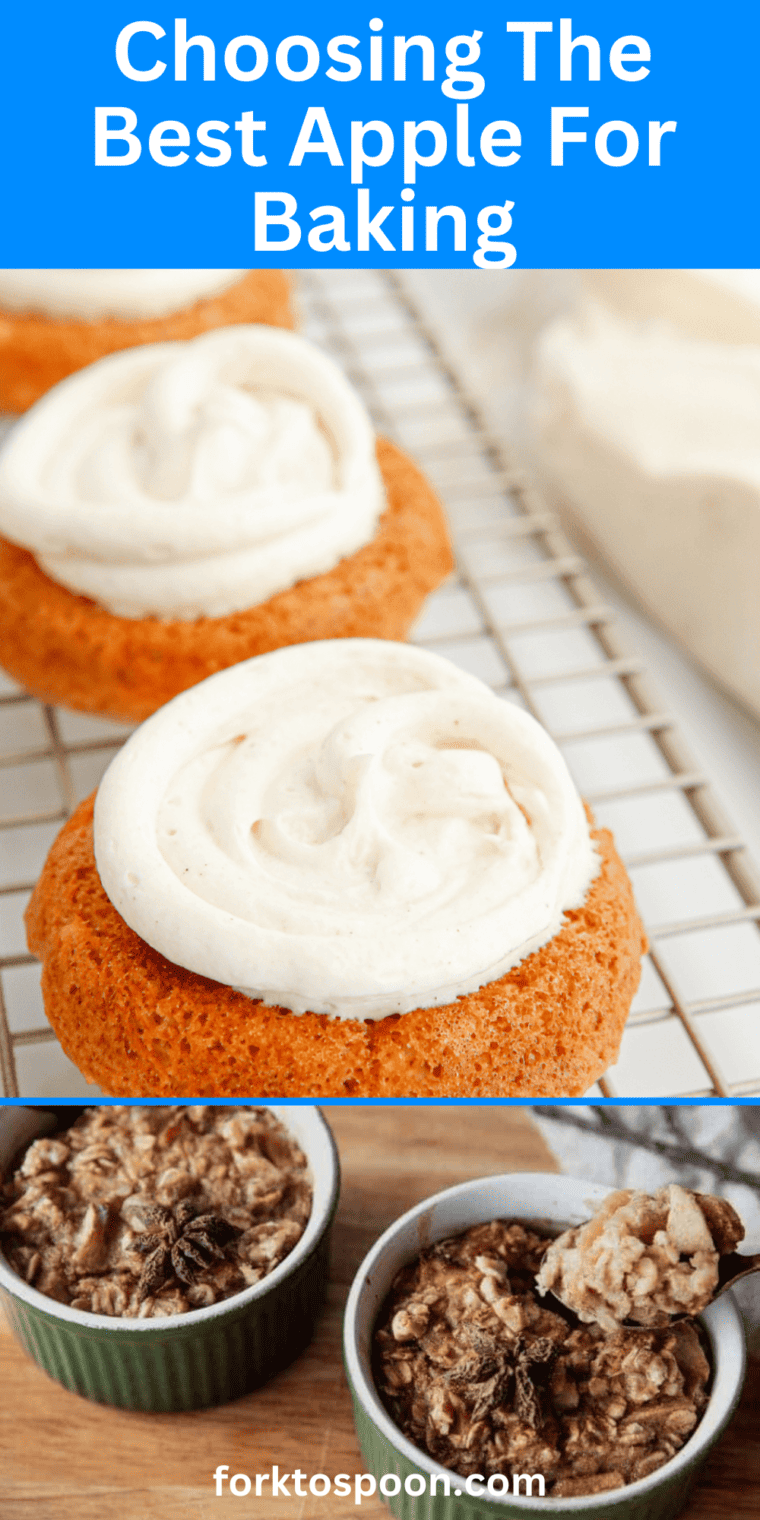Choosing The Best Apple For Baking — Apple season is finally here; we just returned from apple picking, and it’s time for baking!
Whether you’re baking an apple cake, apple tart, or apple pie, you are probably wondering what the best apples to use for baking are; today, we are here to share our picks. For the perfect apple for all of your baked goods!
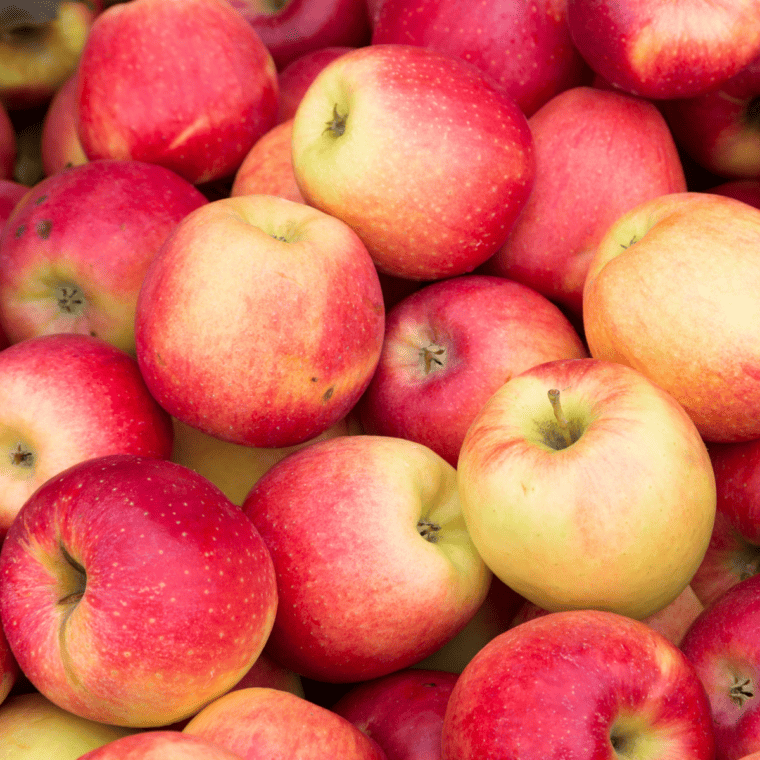
When it comes to baking, not all apples are created equal. The wide variety of apples on the market can make choosing the right one for your culinary masterpiece daunting.
Whether you’re whipping up a classic apple pie, a savory apple chutney, or a sweet apple muffin, the type of apple you use can significantly affect the texture, taste, and overall outcome of your dish. Dive into this guide as we demystify the art of selecting the perfect apple for your baking adventures.
What Are Baking Apples
Baking apples are specific varieties that maintain their structure and flavor when exposed to high oven temperatures. Unlike other apple types that might turn too mushy or lose flavor when baked, these apples become tender yet hold their shape and often release a balanced sweetness complemented by a hint of tartness.
Common examples include Granny Smith, Honeycrisp, Braeburn, and Jonagold. Baking apples are the stars in many dishes, from classic pies and tarts to savory dishes and sauces, ensuring a delightful texture and robust apple flavor in the finished dish.
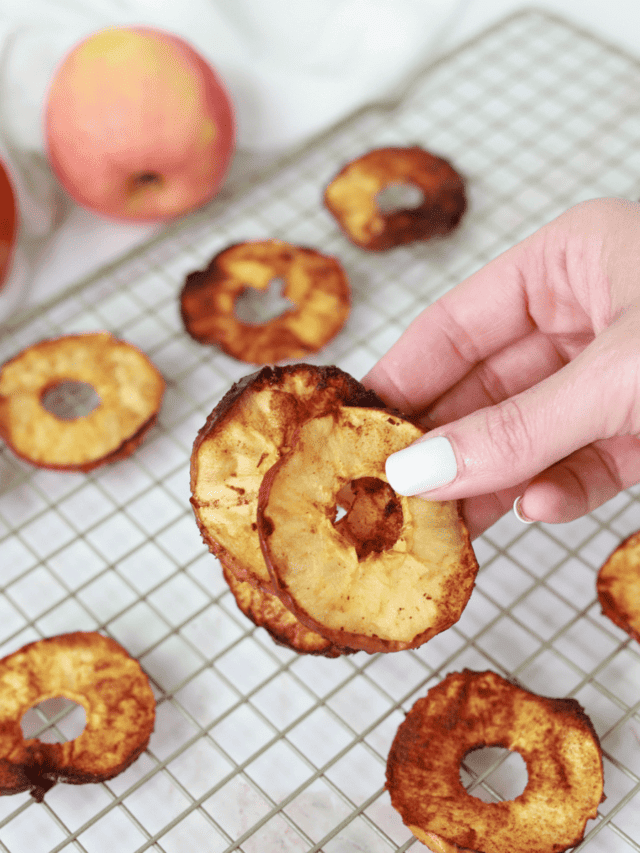
What Is The Difference Between Baking Apples and Regular Apples
When cooked, baking and regular apples (eating apple) differ primarily in their texture and flavor profiles. Here’s a breakdown of their differences:
Texture When Cooked:
Baking Apples: These apples retain their structure during the baking process. They become tender but don’t become mush, ensuring pies and tarts have a desirable consistency.
Regular Apples: Many regular or eating apples can become overly soft and mushy when baked, which isn’t ideal for some recipes, especially pies.
Flavor Profile:
Baking Apples: Typically, they have a balanced blend of sweetness and tartness, which enhances when baked. The flavors concentrate, offering a rich apple taste that complements sweet and savory dishes.
Regular Apples: Eating apples may not have the tartness that contrasts well with sweet baked goods. Some might turn bland when baked, losing their distinct fresh flavor.
Usage:
Baking Apples: Primarily used in pies, tarts, apple crisps, cobblers, and other baked goods. They’re also excellent for making sauces and stews.
Regular Apples: Often consumed fresh out of hand or used in salads and other raw preparations. They can be used in baking and cooking, but the results might vary when using a designated baking apple.
Sugar Content:
Baking Apples: Generally, they have a balanced sugar that allows them to caramelize beautifully when baked.
Regular Apples: Their sugar content varies, but some might not caramelize as well or might become overly sweet when baked.
Skin Thickness:
Baking Apples: Often have a thicker skin that holds up well during baking.
Regular Apples: Skin thickness varies, but some might have thinner skin that doesn’t fare well in high heat.
It’s essential to note that the term “regular apples” can encompass a vast range of apple varieties, so some might still work reasonably well in baking. However, if a recipe specifically calls for a baking apple, it’s best to use one for optimal results.
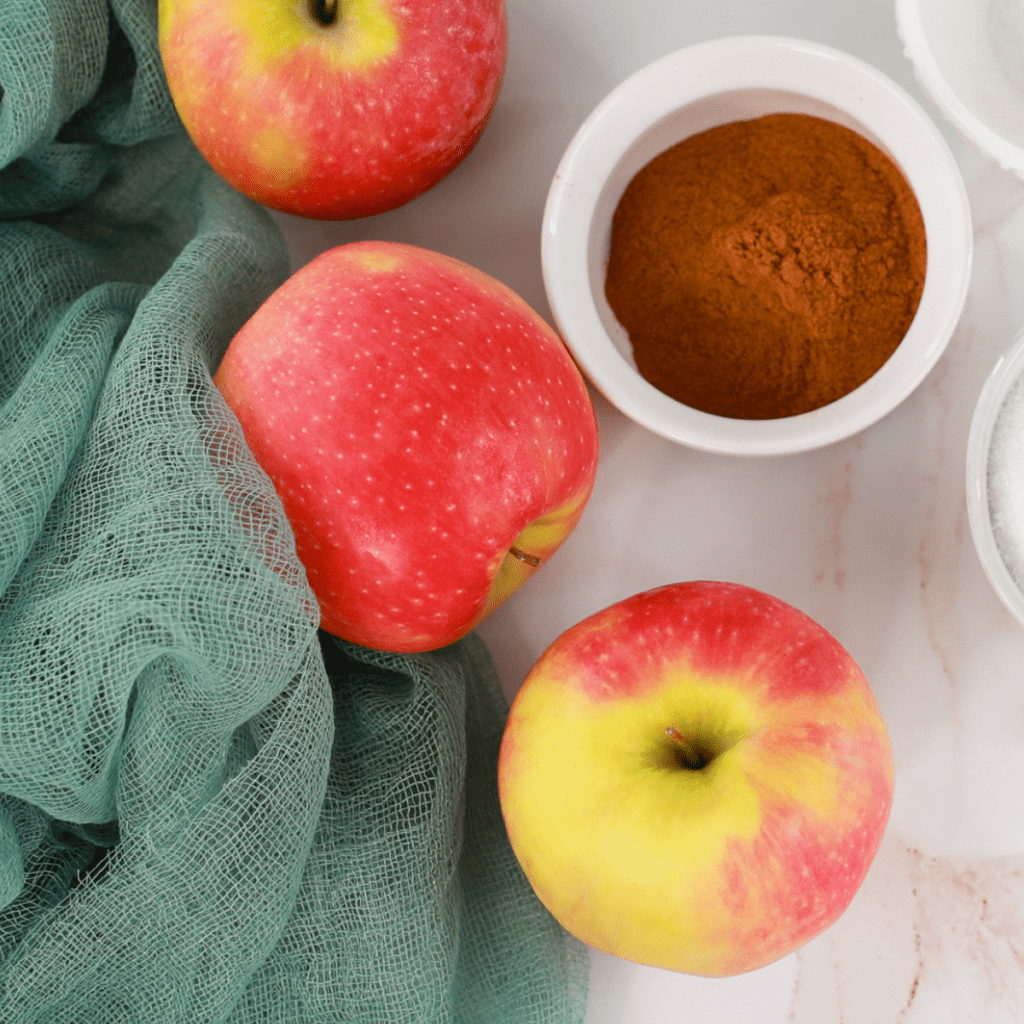
What Are Some Of The Best Apples For Baking
Here’s a list of some of the best apples for baking, along with explanations for why they’re favored:
Granny Smith Apples
The quintessential baking apple, Granny Smiths are tart and tangy. They have a firm flesh that holds up well during baking, ensuring the apple slices remain distinct. Their tartness contrasts beautifully with sweet pie fillings.
Honeycrisp Apples:
Honey crisp apples are sweet with a hint of tartness and crisp texture. They’re juicy, and when baked, they provide a tender, melt-in-your-mouth experience without becoming overly mushy.
Braeburn:
A balanced apple in terms of sweetness and tartness, Braeburns have a firm texture that endures the baking process. They also have a spicy-sweet flavor that intensifies when baked.
Jonagold:
A hybrid of Jonathan Apples and Golden Delicious apples, Jonagolds blends tart and sweet flavors. They have a crisp texture that softens nicely when baked, making them great for pies and tarts.
Cortland:
Cortland apples are juicy and slightly tart. When sliced, they don’t brown as quickly as other varieties, making them excellent for dishes where appearance matters. Their tender flesh is perfect for applesauce or any baked goods.
Northern Spy:
Northern Spy apples are often heralded as one of the best pie apples, sweet and tart. It’s a firmer apple that keeps its shape and provides a nice texture contrast in baked goods.
Rome:
Rome apples are mildly tart and hold their shape exceptionally well during baking. They’re often used in recipes where the apple’s appearance is essential, like tarts or open-faced pies.
Fuji:
While Fuji apples are incredibly sweet, they can still be used for baking, especially if you want to reduce added sugars. They have a crisp texture that softens during baking.
Golden Delicious:
Mild and sweet, Golden Delicious apples become tender and slightly caramelized when baked. They’re versatile and can be used in various baked dishes, from crisps to pies.
Winesap:
Winesap apples are both sweet and tangy, with a firm texture. They have a unique wine-like flavor that becomes richer upon baking.
When choosing apples for baking, consider the final dish’s desired flavor profile and texture. Some recipes may benefit from combining two or more apple varieties to achieve a more complex flavor and texture balance.
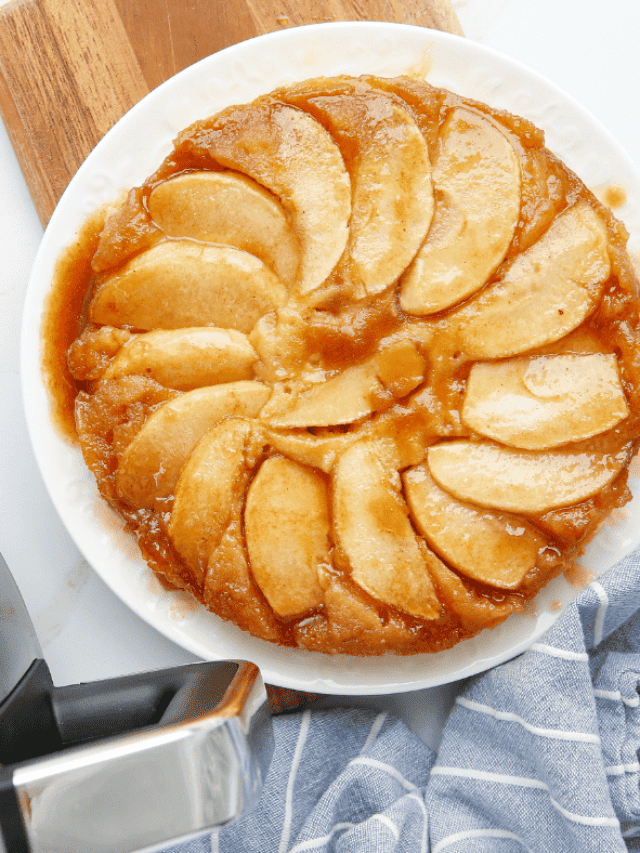
How To Pick The Best Apple At The Grocery Store or Farmers’ Markets
Selecting the best apples ensures fresh and flavorful bites, whether eaten raw or used in a recipe. Here’s a guide to help you pick the best apples from your grocery store or farmer’s market:
Examine the Skin:
- Color: While color variations can be typical based on the apple variety, always look for vibrant, rich colors. A deep or bright color often indicates ripeness.
- Smoothness: The apple’s skin should be smooth with no wrinkles. Wrinkled skin can suggest the apple has lost its freshness.
- Shine: A fresh apple usually has a natural shine, indicating it’s still retaining its natural waxy coat.
Check for Blemishes:
- Avoid apples with soft spots, holes, or any obvious signs of decay or damage. Minor surface scuffs aren’t generally a concern, especially if purchasing from a farmer’s market where apples might not be as polished.
Feel the Firmness:
- Gently squeeze the apple in your hand. It should feel firm and not give way under gentle pressure. Soft apples can be overripe or have internal issues.
Weigh It In Your Hand:
- A good apple should feel heavy for its size, indicating it’s juicy and not dehydrated.
Smell the Apple:
- Ripe apples often have a pleasant, fruity scent. If an apple smells sweet, it’s likely ripe. If it has no smell, it might be underripe. A vinegary or off smell indicates overripeness or spoilage.
Check the Base:
- The area around the bottom of the apple (opposite the stem), known as the calyx, should be relatively closed and tight. If it’s wide and open, the apple might be overripe.
Consider the Season:
- While many apple varieties are available year-round due to cold storage, they have peak seasons. Buying apples in or close to their natural harvesting season often ensures better flavor and freshness.
Ask the Farmer or Grocer:
- When at a farmer’s market, engage with the seller. They can provide insights into which varieties are at their peak and might even offer a sample.
- In grocery stores, produce staff can guide you to the freshest batches.
Taste Test:
- If allowed, or if samples are offered, taste the apple. The flavor should be crisp, juicy, and characteristic of its variety.
Consider the Use:
- Some varieties might be better suited if you’re purchasing apples for a specific recipe. For instance, tart Granny Smiths are great for pies, while Honeycrisps and Fujis are often enjoyed raw.
Lastly, always store your apples in a cool place, preferably the refrigerator, to maintain their freshness for longer. If stored alongside other fruits, be mindful that apples release ethylene gas, which can hasten the ripening of other produce.
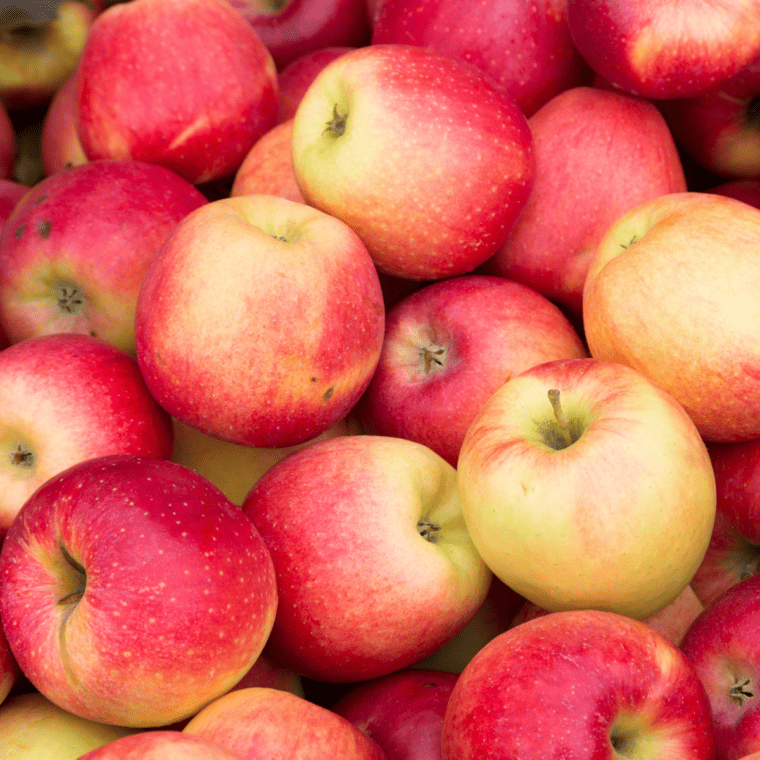
Pro Tips For Cooking Or Baking With Apples
Cooking or baking with apples can be a delightful experience if you keep a few things in mind. Here are some professional tips to ensure your apple dishes turn out perfectly every time:
Choose the Right Variety:
Not all apples are created equal when it comes to cooking or baking. For pies, tarts, or baked goods, tart apples that hold their shape, like Granny Smith, Braeburn, or Pink Lady Apples, are ideal. McIntosh Apples, Golden or Red Delicious Apples, are good sauces or purees that break down easily.
Prevent Browning:
After cutting or peeling apples, they can turn brown quickly due to oxidation. To prevent this, toss them in a bowl with some lemon juice or soak them in a mixture of water and a touch of salt or vinegar.
Consistent Sizing:
When baking or cooking, try to cut your apples into uniform sizes. This ensures even cooking and a consistent texture throughout your dish.
Taste Before Adding Sugar:
Depending on the apple variety and its ripeness, the sweetness can vary. Always taste your apples before adding sugar to your dish, especially when making apple sauce.
Skin On or Off:
The skin of an apple can add color, texture, and nutritional value. However, in some recipes, peeling the apple is best to ensure a smooth texture. Consider the final texture you want for your dish before deciding. Some apples have a thin skin, so you can leave it on during baking.
Layer Flavors:
Apples pair well with a variety of spices. Add cinnamon, nutmeg, allspice, or cardamom to elevate the apple’s natural flavors.
Keep an Eye on Moisture:
Apples release moisture as they cook. If you’re making a pie or tart, you might want to precook the apple filling or add a thickening agent like cornstarch or tapioca to prevent a soggy bottom.
Roasting or Grilling:
If you’re roasting or grilling apples, choose firm varieties that won’t turn mushy. Use firmer apples. Brush them with melted butter or oil to prevent them from drying out.
Add Texture:
When making apple sauces or purees, consider leaving some apples in chunks. This adds texture and a pleasant mouthfeel to the dish.
Storing Cooked Apple Dishes:
Most cooked apple dishes, like pies or tarts, are best consumed fresh. However, if you need to store them, keep them in the refrigerator and reheat them before serving.
Remember, the most important tip is to enjoy the process. Apples are a versatile ingredient,
Best Apple Dessert Recipes
Some of my favorite apples recipes are below:
- Air Fryer Apple Muffins
- Instant Pot Apple Cider
- Air Fryer Best Apple Hand Pies
- Air Fryer Homemade Apple Pie
- Instant Pot Homemade Applesauce
Don’t Forget To Pin:
